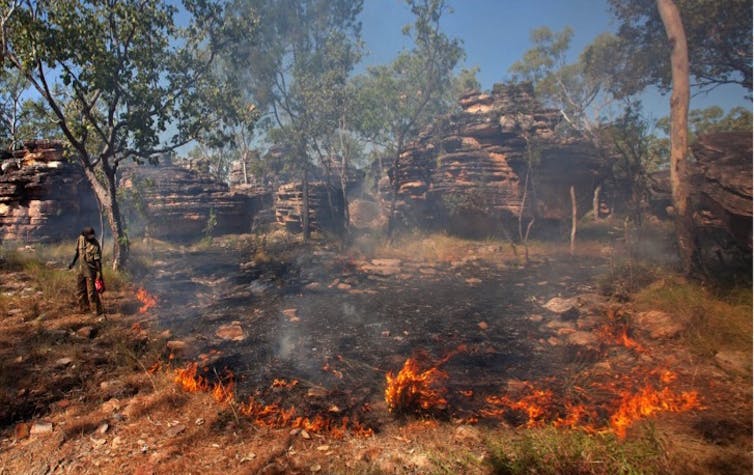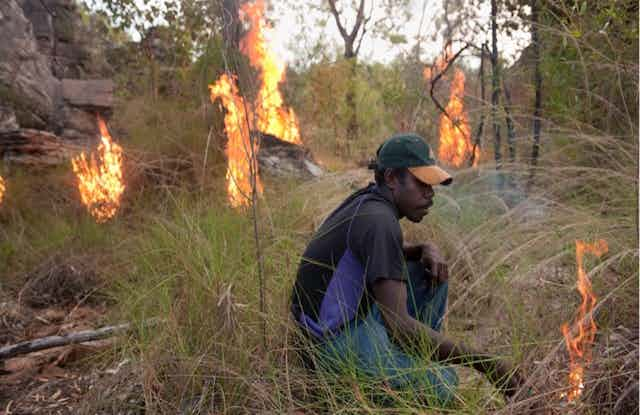Of the 50 billion tonnes of greenhouse gases added to the atmosphere each year, about 2 billion tonnes (4%) come from wildfires. Warmer temperatures, driven by El Niño, can drive emissions even higher. Emissions from last year’s Indonesian fires alone were estimated to be 1.78 billion tonnes and, in 1997, 4.2 billion tonnes.
Getting wildfire emissions under control will be a vital part of combating climate change, particularly as part of increasing ambition to reduce emissions under the Paris Agreement. Every possible opportunity for reducing greenhouse gas emissions and adapting to the impacts of climate change will need to be included in the new regime.
Wildfire is not specifically addressed in the Paris deal, but fire management can help meet several obligations under the agreement. Article 5 of the agreement states:
Parties should take action to conserve and enhance, as appropriate, sinks and reservoirs of greenhouse gases … including forests.
Along with colleagues, I have been working with Indigenous people in northern Australia to understand how traditional fire management reduces emissions. Now we want to take this Australian innovation global.

Wildfire and climate change
Fire-dependent ecosystems, such as tropical dry forests and savannas, cover around one-sixth of the global land surface. Indigenous people occupy most of these landscapes.
A major problem in all these landscapes is poor fire management. Large destructive fires are prevalent as a result. Many of these fire-dependent landscapes are closely linked with tropical rainforests, so poor fire regimes in savannas can have a significant impact on these forests as well.
In Australia, research has shown that burning the savanna in the early dry season rather than late can reduce emissions by as much as half. This is in line with Indigenous fire practices.
Through the Australian government’s Emissions Reduction Fund (under which savanna burning can earn credits), Australia is leading the world in reintroducing traditional fire practices.
The first project to use these practices to generate carbon credits was the Western Arnhem Land Fire Agreement (WALFA), which started in 2006. A decade later, the Clean Energy Regulator (which manages the Emissions Reduction Fund) has approved 65 projects.
More than 30 of these now have contracts with the regulator for over 7 million tonnes of carbon worth more than A$90 million. Fourteen are either Indigenous-owned or have significant Indigenous involvement.
These projects have also created jobs in remote and vulnerable communities, improved biodiversity, reinvigorated Indigenous culture and improved food security and health by enabling people to move out of dysfunctional urban life back to country. These projects represent a rapidly developing business that will play an increasingly important role in climate change policies.
Going global
We and many other organisations have looked at whether we can apply this business model to other countries in Asia, Africa and Latin America. Australian Environment Minister Greg Hunt launched the final report with the Kimberley Land Council at the Paris climate talks.
We found that better fire management could lead to reductions of wildfire emissions by as much as a third, and improve biodiversity and biosequestration, reducing total global greenhouse emissions by almost 1 billion tonnes each year. Perhaps more importantly, we also concluded that changing how we manage fires may be the only way to adapt to increasing wildfires predicted to occur thanks to climate change.
Our assessment confirmed strong interest in the technology in many key countries and among Indigenous people, philanthropic organisations and companies such as ConocoPhillips and INPEX.
This map shows average annual wildfire emissions and highlights the range of countries where this technique could be most useful.

Unlike other efforts to reduce emissions from land use, such as the many Reducing Emissions from Deforestation and Forest Degradation (REDD+) programs, traditional fire management substantially overcomes major problems such as permanence, land tenure, and monitoring, reporting and verification.
While other countries have reintroduced traditional fire management, none measure the emissions reductions as Australia does.

Looking ahead
The next few years will significantly shape the prospects for these traditional fire management projects.
Australia’s climate change policies are set for comprehensive review in 2017, and climate change will be a key issue in the next federal election. The Paris Agreement provides important opportunities for land use management and carbon trading, which this Australian innovation can make an important contribution to achieving.
Traditional fire management represents a major “new” method of land use to mitigate climate change. As with REDD+, reaching its full potential will take decades and billions of dollars.
The next step is to develop a series of pilot sites in other countries. This should be accompanied by regional and international activities to develop the necessary monitoring, reporting and verification procedures along with providing awareness and policymaking support and working closely with relevant organisations.
Promoting this innovative Australian approach, which combines fire management, carbon abatement and Indigenous empowerment, represents a winning combination for global export, while matching existing government policies at all levels.
Support for the next phase of savanna fire management will therefore provide an interesting test of the government’s commitments to play a serious and constructive role in addressing climate change and to support innovation.

